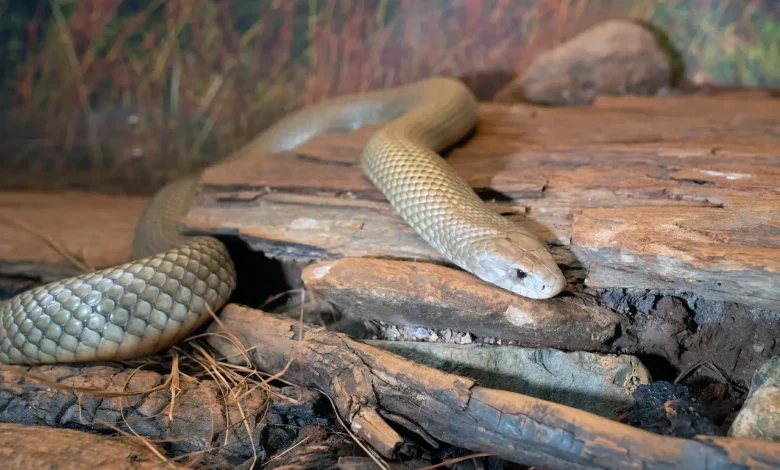5 Dangerous Venom Types – Thailand Snakes

5 Dangerous Venom Types – Thailand Snakes
Snakes in Thailand have different types of venom – that affect you in different ways if you are bitten and venom is inside your bloodstream (envenomation).
Here are the types of venom that each type of snake possesses and why you need to be concerned about a bite.
First off – if you have been bitten by any snake in Thailand – go to a hospital before doing anything.
Thailand Snakes – Venomous and Non-Venomous snake information!
Thailand Snake Venom Types
Hemotoxic (Haemotoxic, Hematotoxic) Venom
This type of snake venom destroys red blood cells – causes hemolysis, disrupts blood clotting, and also attacks other types of cells and tissues – causing profound tissue damage and often, organ failure. These types of bites are very painful. Effects may not begin for hours after a bite. Permanent tissue damage almost always results. A person bitten by a snake with hemotoxic venom may bleed from orifices like the nose, eyes, and also gums and brain.
If you are bitten on the toe, finger, or some extremity you can usually expect to lose part or all of that body part. Malayan Pit Viper (Calloselasma rhodostoma) venom has properties of its venom that attacks the blood and live tissue. Viperkeeper at Youtube calls them “finger rotters”. Their venom literally kills and dissolves tissue including bone.
Death can result from untreated bites. Indeed more people die in Thailand from the Malayan Pit viper than any other snake. More people die across the globe from Russel’s Viper (Chain Viper) than any other snake in the world.
These Thailand snakes have Hemotoxic (Haemotoxic) venom: Russell’s Viper (Chain Viper), Malayan Pit Viper and all of the Green Pit vipers.
Haemorrhagic Envenoming
Causes bleeding from a number of orifices including the mouth (gums), gastrointestinal bleeding, bleeding from the urethra, ears, nose, eyes, and recent and incompletely healed lacerations to the skin. A number of snakes can cause this, including the Malayan pit viper (C. rhodostoma) and the Red-necked Keelback (Rhabdophis subminiatus).
Incoagulable blood, thrombocytopenia, and vessel wall
damage can combine to cause massive internal bleeding.
Myotoxic Venom
Affects muscle tissue primarily. This venom affects the ability of the muscles to contract – leaving the prey flaccid and easy to eat. If a human is bitten it results in pain in the legs, hips, and shoulders – with paralysis the main danger at first. Damage to kidneys follows. About a quarter (25%) of bite victims have severe muscle and/or kidney damage from this venom.
These Thailand snakes have Myotoxic venom: Sea kraits
Neurotoxic Venom
Affects the nerves and nervous system. There may be little pain or swelling when bitten by a snake with predominantly neurotoxic venom like that of Thailand’s kraits.
Once bitten a human has a progressive paralyzation of the muscles of the body, followed by death from respiratory failure as your diaphragm fails to work anymore. Initially, an envenomated bite causes ptosis, droopy eyelids, seeing double, and a sleepy, dazed-like paralysis. There is sometimes excess salivation and vomiting.
Pre-synaptic neurotoxins are found in Thailand elapids and some vipers. These damage nerve endings. Post-synaptic neurotoxins are found in elapid venom and block acetylcholine from binding – leading to neuromuscular paralysis.
These Thailand snakes have Neurotoxic venom: King Cobra (Ophiophagus hannah), Monocled and Indochinese, and Equatorial Spitting Cobras (Genus Naja), Banded kraits (Bungarus fasciatus), Blue kraits (Bungarus candidus), Red-headed Krait (Bungarus flaviceps), and the coral snakes (Genus Calliophis).
Cytotoxic Venom
Attacks and kills living cells of all sorts. In humans, bites from snakes with cytotoxic venom produce severe local and organ-related symptoms, bleeding, swelling, and pain.
These Thailand snakes have Cytotoxic venom: King Cobra, Monocled, and Indochinese Spitting Cobras.
I have heard it said that Thailand has more variety (types) of venomous snakes than anywhere else in the world. If you are bitten – get to the emergency room of the hospital as fast as possible.
Venomous snake antivenin is created by injecting small amounts of diluted snake venom into horses. Horses produce antibodies that fight the venom. The antibodies are then separated from the blood and used to create the antivenin for humans.
There are antivenins produced in Bangkok at the Queen Saovabha Memorial Institute (QSMI) Also known as the Red Cross Snake Farm. Here is a list of the antivenins made at QSMI:
- Trimeresurus (Cryptelytrops) albolabris: for green tree vipers
- Calloselasma rhodostoma: for Malayan pit viper
- Daboia russelii: for Russell’s viper
- Bungarus fasciatus: for kraits
- Ophiophagus hannah: for king cobra
- Naja kaouthia: for cobras and spitting cobras
This list was by Michael Cota, resident Thailand researcher.
As you can see in the list of snakes that match the venom types – there are multiple snakes listed in some cases. Some snakes have venom which fall into more than one category. Monocled cobras (Naja kaouthia) have venom that is primarily neurotoxic, but, it also has hemotoxic properties and causes necrosis of tissue at the bite site.
I know of one case personally where a man, bit on the toe by Naja kaouthia, lost his lower leg, then entire leg, and then died anyway about twenty days after the bite.
The categories of snake venom are not complete without mentioning the major effects of some other snakes that don’t fit into the nice categories listed above.
The rear-fanged colubrids, some considered venomous, and some not, have the ability to cause anaphylactoid reactions – which can shut down the bite victim’s respiratory system.
Herpetologists and other snake enthusiasts frequently carry epinephrine inhalers into the field to take in case breathing starts to close down, the inhalers can open the airways somewhat – ensuring enough oxygen can reach the lungs and blood.
Red-necked keelback snakes (Rhabdophis subminiatus) , once thought harmless, are now known to possess a venom that attacks the renal system (kidneys) of the bite victim, eventually causing renal failure and, untreated – death.
There are a couple of cases in the literature of this snake causing serious damage to victims of bites that didn’t remove the snake from their body immediately. In one case the man let the snake bite into him for about two minutes, he reported. He had major issues and was in the hospital for weeks – doctors were not at all sure he would survive.
A snake can have a number of venom types and will require comprehensive treatment to address each clinical issue as it presents.
Note – there is a small, but significant risk of getting antivenin to treat venomous snakebite. When a bite victim is allergic to the antivenin, shock and death can result. Please ensure the following:
- Do not get treated with antivenin before you have any symptoms of envenomation, even if you know the exact species of snake that bit you. Dry bites (without venom injection) occur during about 30-50% of all bites.
- If you will be treated with antivenin, insist on a very small dose to test whether you are allergic to it, before the full quantity is administered. Much safer this way!

Venomous Snakebites and Near Misses!
More than 34 stories of venomous snakebites and very near misses from Southeast Asia’s most deadly snakes – King Cobra, Malayan Pit Viper, Monocled Cobra, Banded Krait, Malayan Krait, and more! Digital Book with over 100 pages by Vern Lovic.
Order PDF here for $4.99 (eBook)

I what to know what is the venom on all snake and spider do you know high venom in all snake and spider i know their some or not poison. Do you know how poison their are you mail to 927 west cahoun. St in macomb Illinois. 61455 the phone is 3085699167
Excellent question…
very important news about toxins……Great.
Epinephrine is not a steroid and the text should be changed to give more accurate information. The primary effect is to antagonise anaphylaxis which is a cellular response to a perceived toxin. Any improvement in respiration is the result of epinephrines ability to reduce tissue oedema and relieve airway constriction
Thank you for info.
Do you know where in Thailand can l buy snake venom?
I Thank you in advance.
Hello. Great site, thank you for it.
Should I be worried about the 1 meter Monocled Cobra living under my hay in the stable on Phuket? I do get my feet right up to where I’ve seen it twice.
Also had a 2 meter Ret python curled up on my front few months back- with a cat sized meal evident. Vid on my you tube of it.
Hi Christy,
Well, cobras can kill you. Up to you if you worry about it. What’s your youtube channel?
Cheers,
Vern
There are many different types of snakes in tropical countries like Sri Lanka, Malaysia, Vietnam and India. In this category there are venomous spiders too. Some of these snakes could damage the body tissues too. In relation to snake and spider bites Hemotoxin and Neurotoxins are common and result in clotting blood and damaging nervous system. Quick action is paramount if you are bitten by a centipede spider or snake. Sydney Funnel Web spider has fangs and toxic venom which attacks the nervous System. Some snakes can spit venom which could damage your eye sight. Even centipedes can give you a painful and nasty bite although it is not as damaging as snake venom, and life threatening.